Cambridge is hardly known for being a hotbed of crime or anti-social behaviour. The city is a far cry from the counter-terrorism activities and armed patrols associated with London - the constant scourge that is bicycle theft and the drunken misadventures of the city’s large student population might seem more akin to the idea of law enforcement in this ancient seat of learning.
Away from the colleges and the classical façade of the 1845-built Eastern Counties Railway station, PC Paul Gray and the British Transport Police’s new offices are located in the shadow of Cambridge Power Signal Box.
What is immediately apparent is the expanse of Cambridge BTP’s patrol area - Gray can be called to any part of the railway network throughout West Norfolk, Cambridgeshire, West Suffolk and North West Essex.
Falling within its jurisdiction are long and sparsely populated sections of the Fen Line to King’s Lynn via Ely, the Breckland Line to Norwich via Thetford, and routes from Ely to Ipswich and to Peterborough via March. To the south of the city are its two routes to London via Hitchin or Bishop’s Stortford.
“Norwich, Ipswich, Colchester, Stevenage and Peterborough are the nearest other BTP stations, and we fill the big gap in the middle,” says Gray.
“From here we cover an area ranging from the Wash and King’s Lynn all the way down to Stansted Airport. And we have ten million passengers going through Cambridge every year, which is a major, major station.
“I did 11 years on the Underground and now 11 years here, and it’s completely different. There’s a big contrast between rural and urban policing - out here we are everything.”
Sitting within the Eastern region of the BTP’s territorial sub-structure, there are just six PCs and a sergeant based at Cambridge. The prevalence of crime and the number of call-outs is unsurprisingly a small fraction of the level officers must respond to in the capital, but the disparity in available resources necessitates a much wider-reaching job specification for the officers on provincial duty.
“We don’t have squads here, we don’t have CID, and anything specialist we have to call in from elsewhere,” Gray explains.
“Out here we will deal with everything from beginning to end. We don’t just arrest people and hand them over - we do all the investigation, CCTV requests and so on. Unless it’s a major crime, which we will hand over to CID.
“If someone’s in custody, and that could be in Braintree, King’s Lynn, Newmarket or wherever, I will travel out and deal with them from the first interview right through to gathering evidence for any subsequent investigation and preparing the file for the Crown Prosecution Service.”
In keeping with most similarly-sized BTP stations, Cambridge is not manned 24 hours a day, nor are all six PCs ever all on call at the same time. Working in eight- or ten-hour shifts, the station only stays open for as long as the trains are running.
However, Gray explains that close integration with local constabularies and neighbouring BTP stations ensures there is always adequate coverage, despite the small number of officers based at Cambridge and the large rural area they must police.
“We don’t do night shifts here. That’s covered by our ‘mothership’ post, which is Stevenage. The trains end here at about 0130 and the station is then locked up and shut. We work until 0200 on Thursday, Friday and Saturday nights to mainly deal with anti-social behaviour.
“We would always like more PCs - as everyone else would, I expect - but we are a close-knit team and we rely on having really close links with the local police. We help them and they help us.
“Back-up can be a long way away, so you tend to police in ways which will buy you time. The best weapon is often not handcuffs or a baton, but by talking and buying yourself time that way.”
Gray is quick to point out that this type of policing has its benefits. Having fewer colleagues enables closer relationships with railway staff and the local community, while he also clearly relishes the variety of policing scenarios that only comes with working away from London.
“Because we are the railway police, we get to know staff quite well and we are the friendly face. They don’t have to deal with lots of different police officers, and generally see the same one. This means that they tell us stuff, so it helps with intelligence gathering. It’s almost like the old days of having the local bobby.
“This image of us sitting around waiting for the radio is completely false, which in London can sometimes be the case if they are on specific response.
“The day job can vary enormously, from patrolling at King’s Lynn when the Royal Family travel to Sandringham by rail, to policing football fans going to see Cambridge United.
“Last month we had an unexploded bomb here from the Second World War, which the builders discovered beneath some new toilets. It turned out to be a bullet after we evacuated the station.
“So it is very satisfying to have responsibility for such a large area. We are trusted to get on with it, with such a small team, whereas in London you are given a particular task and it’s very orderly managed. Here we come in and we don’t have a plan at the start of the day.”
Inevitably, covering a predominantly agricultural area stretching across miles of flat fenland, Gray and the team must deal with their fair share of level crossing enforcement and near-misses involving farm vehicles at isolated points of the network. Fatalities are another occupational hazard, and a sadly unavoidable task that falls within the BTP’s remit.
Gray says that many years of dealing with deaths on the railway has desensitised him from the most horrific images he is forced to endure, but the task of informing loved ones remains as harrowing as ever. His solemn and essential duty to assist the coroner by recovering the body helps distract him from dwelling too long on the macabre.
“It’s incredible how it comes in fits and starts, where you get a whole wave of it and then nothing for a year. I don’t know the reason for that.
“We have a major regional mental health treatment centre here at Fulbourn, which is right next to the railway line. The Victorians built them right next to each other, and we are still living with that now. But we do a lot of liaison with them to mitigate the times when patients will try and get onto the railway.
“When fatalities happen you go into automatic mode in terms of preserving the scene and the dignity of the person. Obviously sometimes they do it in a public area, and we have to try and keep the public away and cover the area. After we’ve made sure the trains have stopped, we have all manner of kit in the back of the car to assist us in dealing with fatalities.
“We recover any property which might be strewn across, to try and find who they are and identify them. Sometimes they will be very particular and lay everything out by the side of the track, sometimes they will have nothing on them and it will be days before we find out who they are through DNA and fingerprints.
“I find that because I’ve done it a number of years, dealing with the body on the scene is dreadful in itself, but I can deal with that and you get used to it. But to this day I still find the most difficult bit is when you go to the family. I try not to look at any photographs because then it really hits you.”
This can prove to be a race against time, as modern technology and social media increasingly threaten to circumvent official process. Gray makes it his business to personally inform the next of kin, if there is any possibility of a journalist or any other source of information reaching them first. Despite having experience on his side, he says the emotional response of family members still has the power to catch him by surprise.
“People hear it on the news in today’s modern world, and we get that all the time so we frantically try and get to the next of kin first. It can be difficult to establish the relationship because you don’t know if they’re the current partner, ex-partner, son-they-don’t-get-on-with or all manner of things.
“You don’t know what their reaction is going to be because you’re standing there as a police officer, and they might not have a very good relationship with the police and you’re giving them the worst news they could ever receive in their life. I’ve been assaulted before, but you also get some people who are simply relieved to have closure. The scale of reaction is staggering.”
After 22 years’ service, Gray does not consider death on the railway or speaking to grief-stricken relatives to actually be the most difficult aspect of his role. This status he reserves for troublesome cases of juvenile runaways and detaining people under the Mental Health Act.
“Juvenile runaways can be a nightmare because if you’re on your own, they can make all manner of allegations and accusations,” he adds. “So you frantically try and get another officer from somewhere to help because you are in a vulnerable position, particularly if they are a young female.
“Equally, if you drag someone off a railway line who wants to commit suicide, you are in a vulnerable position as you become responsible for them and their safety. Until the health services take responsibility you have this person thinking all manner of stuff right next to a busy railway line and trains. You put them in the back of the vehicle and hope someone else arrives. Out there, you don’t know just how close help will be.”
Gray can recall one occasion when a woman with known mental health difficulties was retrieved from the platform edge and returned to King’s Lynn Hospital, where she was being treated. What followed demonstrates how exposed officers can feel when answering this type of call.
“We managed to calm this lady down by promising her milkshake, which she was obsessed by. We took her straight back to hospital, and kept stopping to top up her milkshake.
“We got back there late at night and we were left in a room along with my colleague, while we waited for a mental health assessment.
“Suddenly she rises up like a phoenix from the flames and goes from nothing to being stark naked in a split second, and starts singing Madonna songs. She went from being almost asleep one minute to suddenly ripping off all her clothes.
“I’m straight on the phone trying to get help. This girl is going for me, while I’m on the phone, and my colleague is desperately trying to know where to put his hands to stop her.
“Afterwards you can laugh about it because eventually someone with medical training came, but at the time you’re in a desperately vulnerable position. You can’t just walk away and leave them because you’re responsible for whatever happens.”
Gray has developed an impressive ability to reconcile the positive experiences of policing the railways with those he’d rather forget. However, it is clear that the work of the BTP will get no easier, with the rising patronage of the railways, the constant addition of new infrastructure and the heightening threat of terrorism.
Cambridge will also gain another station in 2017, to serve the city’s science park and the suburb of Chesterton. It will undoubtedly pose an additional strain on the BTP team at Cambridge, but one that Gray says they will take in their stride.
“The brand new station being built will add some challenges. You don’t know exactly what new set of problems it will cause because every station is unique.
“Cambridge is massively expanding and with it are its transport facilities. With that comes its own challenges and we’ll have to see how it goes. But it won’t be a problem for us.”
- This feature was published in RAIL 794 on February 17 2016.

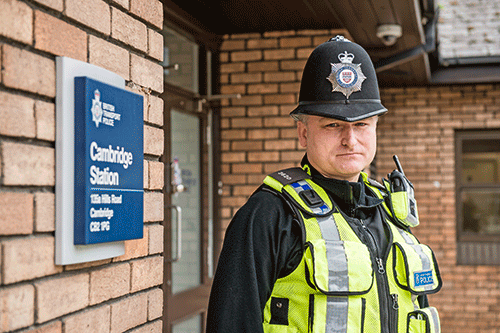
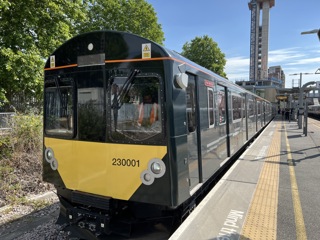
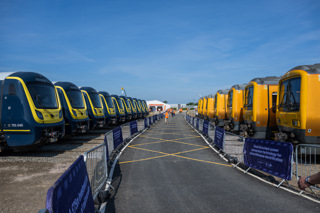
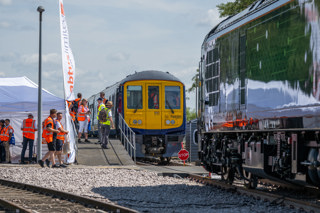

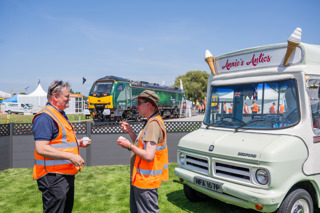











Login to comment
Comments
No comments have been made yet.